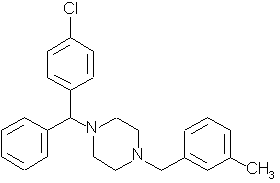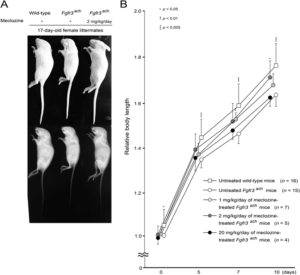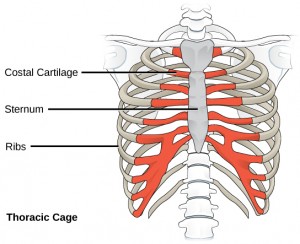Amateur Chinese Researchers Are Extremely Educated On Bone Interstitial Growth – Important!
Something that I have speculated on for a long time is that there are dozens, if not hundreds of individual amateur level researchers around the world like us, and I had said that most of them who are highly educated and understand the mechanics of the bone as well as any MD trained orthopedic specialist would be probably from Russia, Sweden, The Netherlands, Germany, South Korea, Japan, or China. Those are the only few countries which have the level of education, and technology sophistication to be able to play with the more advanced subjects.
I track the sources which link to this website. A link to the website has made my speculations much more concrete. It is from a Chinese based website source, and the level of knowledge expressed is above what I even understood, until I started to digg further into the technical details. Refer to the link http://bbs.wenxuecity.com/health/468959.html
The text on the page is completely in a language which I don’t understand, but fortunately for Google Chrome, it was roughly translated. I posted the translated parts below.
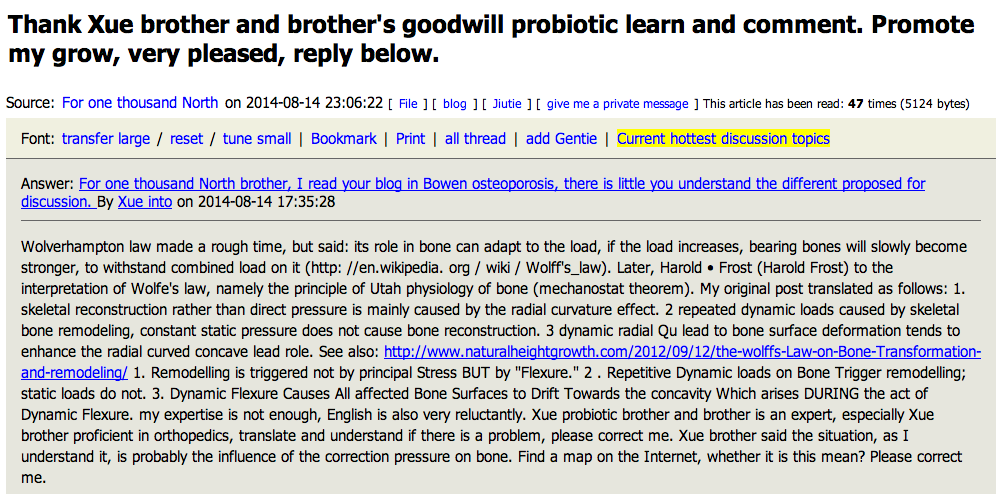

 Some background notes on this website called Wen Xue City – After looking at its Wikipedia page, it seems that it is not some local city forum, but a very well known website that is used by the Chinese Expat community. It is supposed to be the…”largest overseas Chinese website”. From the Wiki pages, it is supposed to get around 2 Billion page views every month, and with 3 million unique visitors (is it by per day??).
Some background notes on this website called Wen Xue City – After looking at its Wikipedia page, it seems that it is not some local city forum, but a very well known website that is used by the Chinese Expat community. It is supposed to be the…”largest overseas Chinese website”. From the Wiki pages, it is supposed to get around 2 Billion page views every month, and with 3 million unique visitors (is it by per day??).
First, whoever gave the reply to this person who wanted to grow taller and lengthen their bones understood the details on how Wolff’s Law is supposed to work when you put loads in certain directions on a bone. They are using words to describe which direction to apply pressure on and what would happen to the bone.
The mention of the Mechanostat Theory by Harold Frost was something I only glanced at early on in the website and forgot about. What happened is that after Wolff came out with his law, Frost came along and adjusted that law aka refined it to be much more specific and detailed on what exactly happens to the bone, while still accepting the original law laid out by Wolff.
When the poster is talking about this term called “radial” I believe that they are talking about a lateral/side force/pressure used. This is similar to what Tyler proposes aka applying force laterally.
I also agree with him that if you are going to be applying a static force, the bones will not be remodeled. You need a dynamic, intermittent type of loading.
They also understand that the increase in bone thickness will always be in the area of bone which is concave in nature.
Here is the amazing point which is made, which I did not reach yet. Remodeling of bone is not possible unless the bone is curved aka concave in the area which you want to thicken/add bone to. It is not the force/pressure/load that is causing the bone to remodel, but the curved/concave nature of the surface of the bone.
Whoever wrote the post seemed to be writing it maybe for the purpose of figuring out how to grow bone density to reverse osteoporosis in the elderly, but they might also be talking about bone volumetric growth, aka making the bones bigger/longer.
What makes this link so important, and what are the implications?
If these guys were talking about how to make the bones longer for height increase, then they are much further ahead in understand the mechanics of the bone than me at least. If they are instead trying to learn Frost/s refined rule on Wolff’s Law for just increased bone density for preventing or treating osteoporosis, then they are still extremely advanced.
I think that there are probably websites and forums in the Russian, Chinese, and German internet space which are looking at the same PubMed studies like we are and have a much better grasp and understanding on what are the technical problems, and issues that are most important which we must resolve to push the effort forward.
If the person who wrote that reply (with all those pictures and diagrams on the effects of loading a femur) is any type of indication of the scientific level of bone mechanics expertise, I would then say that even these amateur level Chinese height increase researchers are much further than where we are. So did they figure out something already? I don’t think so, unless the government or military have done it and decided not to publish their top secret research and findings.
I have always believed that there are certain government groups anonymously tracking and following this website. We are not the normal type of blog talking about cooking recipes and putting Facebook pictures of their kids up. These days with the ability to get Private VPN services, and use local proxies to hide one’s IP, it is almost certain that I can not even figure out who are these people who are secretly reading the website and taking the information I leak to use for their own benefit.
I have already proved that the professional researchers in the Chinese Military Hospitals have been working to get the surgery of growth plate transplantation to work out for at least 2 decades now and that teams in a few Russian Cosmetic Clinics are also trying to get the exact same type of surgical technique to work out as well, by growing the growth plates from surgically removed fat tissue.
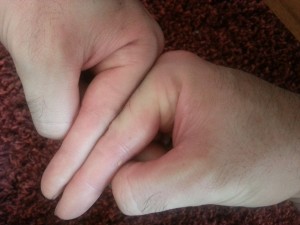 The right finger could be longer since last update but not sure.
The right finger could be longer since last update but not sure.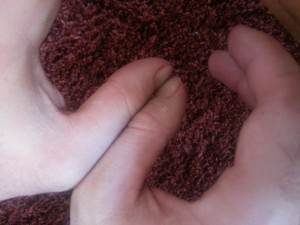 I’ve been clamping my left thumb but not my right and from this picture you can see the left thumb is slightly but significantly longer. The osteophytes are much less noticeable in my left thumb than my right index finger but they are there if I feel around the clamping region.
I’ve been clamping my left thumb but not my right and from this picture you can see the left thumb is slightly but significantly longer. The osteophytes are much less noticeable in my left thumb than my right index finger but they are there if I feel around the clamping region.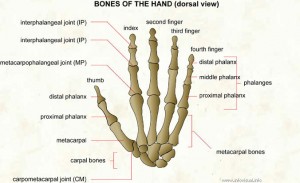 I clamp the two interphalangeal joints from side to side but at the metacarpophalangeal joint I clamp from top to bottom. The epiphysis near the MP on the index proximal phalanx of my right (clamped) finger is thicker than my left finger but not as enlarged as the epiphysis near the IPs of the distal and middle phalanx. The IPs of the clamped joints are also rougher than the MP which is clamped overhead rather than side to side. So some of the enhanced epiphyseal thickness may be due to LSJL growth stimulation and other effects may be due to irritation from the clamping surface on the joint. If I can get an x-ray it will be interesting to compare the two IPs to the MPs. For a period of time, I tried clamping the two IPs from top and bottom but didn’t get noticeable results from that. Top to bottom clamping may be more effective in the MP than the IPs due to differences in joint structure. You can feel much more pressure generated by top to bottom clamping of the MP than you can the IPs.
I clamp the two interphalangeal joints from side to side but at the metacarpophalangeal joint I clamp from top to bottom. The epiphysis near the MP on the index proximal phalanx of my right (clamped) finger is thicker than my left finger but not as enlarged as the epiphysis near the IPs of the distal and middle phalanx. The IPs of the clamped joints are also rougher than the MP which is clamped overhead rather than side to side. So some of the enhanced epiphyseal thickness may be due to LSJL growth stimulation and other effects may be due to irritation from the clamping surface on the joint. If I can get an x-ray it will be interesting to compare the two IPs to the MPs. For a period of time, I tried clamping the two IPs from top and bottom but didn’t get noticeable results from that. Top to bottom clamping may be more effective in the MP than the IPs due to differences in joint structure. You can feel much more pressure generated by top to bottom clamping of the MP than you can the IPs.

